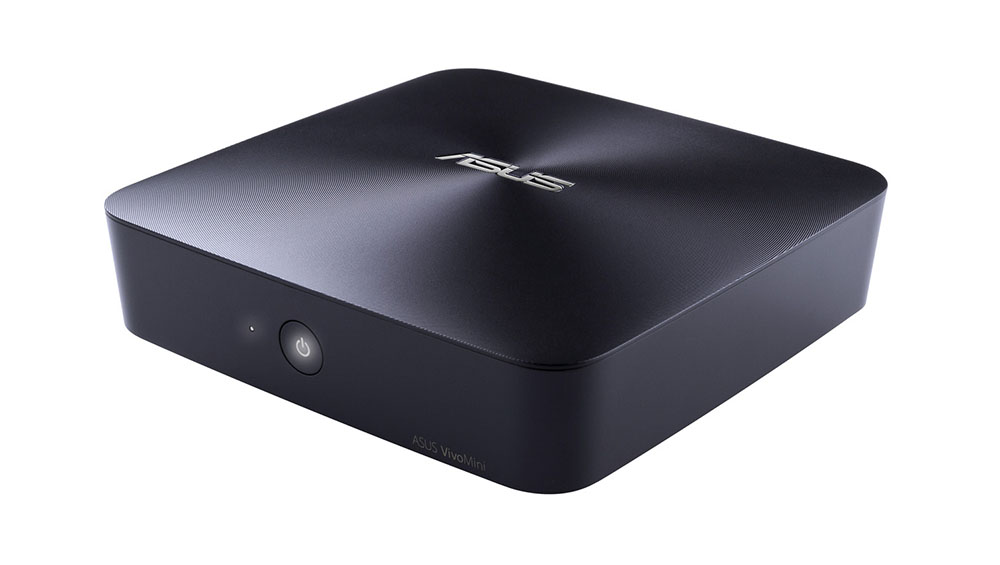Install Windows On Asus Chromebox
Posted : admin On 6/5/2019Chrome OS is a great operating system, but it can't do everything. There are times when you need Windows. Here's how to install Windows 10 on Chromebook. WinToUSB (also called Windows To USB) allows you to install and. Asus Chromebox CN62 (Celeron 3205U/Core i3 5015U/Core i7 5500U).
Contents
- 1 Introduction
- 2 Developer Mode
- 3 Troubleshooting
Introduction
This page contains information about the Asus Chromebox that is interesting and/or useful to software developers. For general information about getting started with developing on Chromium OS (the open-source version of the software on the Chrome Notebook), see the Chromium OS Developer Guide.
Specifications
- CPU: Haswell Celeron 2995U. 1.4GHz, dual-core, 2MB Cache OR1.7 GHz Core i3-4010U, quad-core
- RAM: 2GB (celeron) or 4GB (i3)
- Display: None
- Disk: 16GB SSD (NGFF M.2 connector)
- I/O:
- HDMI port
- DisplayPort++
- 4 x USB 3.0
- SD slot (SDXC compatible)
- Headphone/mic combo jack
- Connectivity:
- WiFi: 802.11 a/b/g/n
- USB ports can handle some Ethernet dongles
- Ethernet
- Servo header: Standard 2x25 / AXK750347G
Developer Mode
Caution: Modifications you make to the system are not supported by Google, may cause hardware, software or security issues and may void warranty.
Introduction
Enabling Developer mode is the first step to tinkering with your Chromebox. With Developer mode enabled you can do things like poke around on a command shell (as root if you want), install Chromium OS, or try other OS's. Note that Developer mode turns off some security features like verified boot and disabling the shell access. If you want to browse in a safer, more secure way, leave Developer mode turned OFF. Note: Switching between Developer and Normal (non-developer) modes will remove user accounts and their associated information from your Chromebox.
Entering
To invoke Recovery mode, you insert a paper clip and press the RECOVERYBUTTON (just above the kensington lock) and press thePowerbutton. Release the RECOVERY BUTTON after a second.
To enter Dev-mode you first invoke Recovery, and at the Recovery screen press Ctrl-D (there's no prompt - you have to know to do it). It will ask you to confirm by pressing the RECOVERY BUTTON again.
Dev-mode works the same as always: It will show the scary boot screen and you need to press Ctrl-D or wait 30 seconds to continue booting.
USB Boot
By default, USB booting is disabled. Once you are in Dev-mode and have a root shell (Ctrl-Alt-F2), you can run:
and reboot once to boot from USB drives with Ctrl-U.
Legacy Boot
This device includes the SeaBIOS firmware which supports booting images directly like a legacy BIOS would. Note: the BIOS does not provide a fancy GUI for you, nor is it easy to use for beginners. You will need to manually boot/install your alternative system.
Like USB boot, support for this is disabled by default. You need to get into Dev-mode first and then run:
The essential luther vandross zip. Oct 25, 2014 - Collection of Luther Vandross Luther Vandross was one of the most successful R&B artists of the 1980s and '90s. Not only did he score a series.
sudo crossystem dev_boot_legacy=1and reboot once to boot legacy images with Ctrl-L.
Leaving
To leave Dev-mode and go back to normal mode, just follow the instructions at the scary boot screen. It will prompt you to confirm.
If you want to leave Dev-mode programmatically, you can run crossystem disable_dev_request=1; reboot from a root shell. There's no way to enter Dev-mode programmatically, and just seeing the Recovery screen isn't enough - you have to use the three-finger salute which hard-resets the machine first. That's to prevent a remote attacker from tricking your machine into dev-mode without your knowledge.
Troubleshooting
Legacy Boot Doesn't Work
Sometimes it's possible to break the SeaBIOS install in the flash (sometimes doing innocuous things like tweaking the GBB flags). If you do get into such a situation:
- Check that dev_boot_legacy is set to 1 when you run crossystem
- If it isn't, then see the normal Legacy Boot section above
- if it is, then see below
You can safely reset the copy of SeaBIOS in your flash by running (as root):
# chromeos-firmwareupdate --sb_extract /tmp# flashrom -w /tmp/bios.bin -i RW_LEGACYRunning Chromium OS
Before you start fiddling with your own builds it is strongly recommend to create a recovery USB stick or SD card. As long as you don't disable hardware write protect on the system & EC firmware, you can get your machine back into working order by entering Recovery Mode and plugging in your recovery image. You can create a recovery image from Chrome OS by browsing to chrome://imageburner or follow instructions for other OS on the Chrome OS help center site.
You can build and run Chromium OS on your Asus Chromebox (versions R32 and later). Follow the quick start guide to setup a build environment. The board name for the Asus Chromebox is 'panther'. Build an image and write it to a USB stick or SD card.
To boot your image you will first need to enable booting developer signed images from USB (or SD card). Switch your machine to Developer mode and get to a shell by either via VT2 (Ctrl+Alt+F2) and logging in as root or by logging in as a user (or guest mode), starting a 'crosh' shell with Ctrl+Alt+t, and typing 'shell'. Now run 'sudo crossystem dev_boot_usb=1' and reboot 'sudo reboot'.
Plug your USB stick or SD card in and on the scary 'OS Verification is OFF' screen hit Ctrl+u to boot from external media. If all goes well you should see a 'Chromium OS' logo screen. If you want to install your build to the SSD, open a shell and type 'sudo /usr/sbin/chromeos-install'. Note: This will replace EVERYTHING on your SSD. Use a recovery image if you want to get back to a stock Chrome OS build.
How To Install Windows On Asus Chromebook
Have fun!
Firmware
This device uses coreboot to boot the system. You can find the source in the Chromium OS coreboot git tree in the firmware-panther-4920.24.B branches.
Can You Install Windows On Asus Chromebox
Installing Windows (USB) on Chromebooks with limited <16GB on-board storage
WinToUSB (also called Windows To USB) allows you to install and run a fully-functional Windows operating system on an external hard drive or USB flash drive.
Stuff you'll need:
A fast USB flash drive (Preferably a USB3 Portable SSD Ex: Samsung Portable SSD T1 or T3)
Windows 10 installation ISO file

Check to see if your Chromebook model has “Full ROM firmware (UEFI)” firmware type available. https://mrchromebox.tech/#devices
If so, proceed to create a “Windows To Go” USB following the guide: http://easyuefi.com/wintousb/resource/install-windows-10-on-usb-flash-drive.html
Note: At Step 7, after you select the USB drive, a pop-up will appear asking you if you want to format it to continue, make sure tick the 'GPT for UEFI' checkbox, then click 'Yes'.
Once the USB is ready, it’s time to get your Chromebook setup using the following guide: https://coolstar.org/chromebook/windows-install.html

Note: Skip 'Step 1' under the 'Install Windows from USB' section as we have already prepared the USB.
